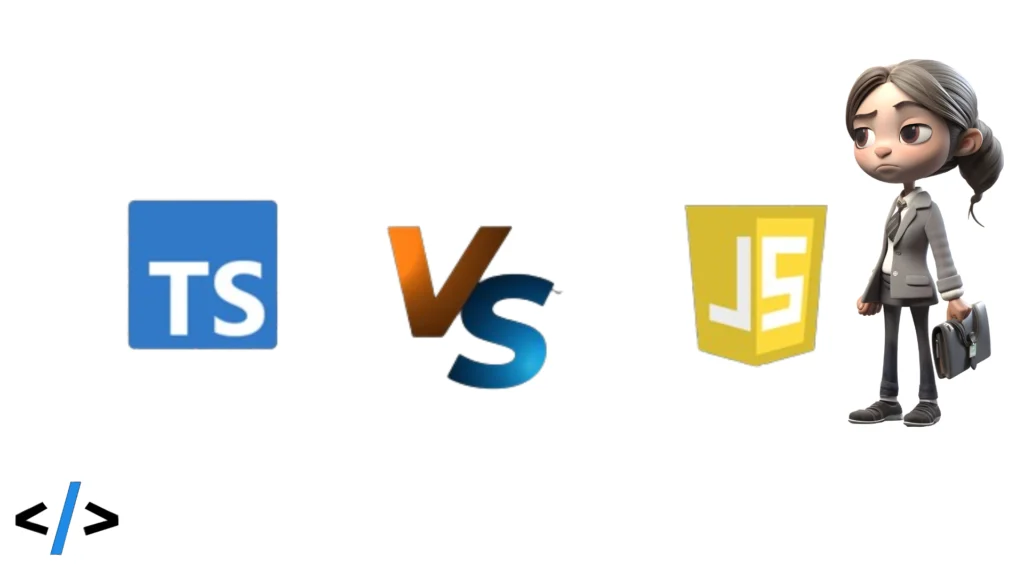In the ever-evolving landscape of web development, the choice between “TypeScript vs JavaScript” has become a pivotal decision for developers worldwide. This comparison, we delve into the nuances of these two programming languages, aiming to guide you through their distinctions, use cases, and the impact each can have on your web projects.
Understanding the Basics
JavaScript
JavaScript, often regarded as the backbone of web development, is a versatile scripting language primarily used for client-side interactions on web pages. Its simplicity and ubiquity make it an essential tool for front-end developers, enabling dynamic and interactive web applications.
TypeScript
TypeScript, on the other hand, is an open-source superset of JavaScript, developed and maintained by Microsoft. It introduces static typing to the language, enhancing code quality and providing developers with powerful tools for catching errors during development.
The Key Differentiators
Type Safety
One of the primary advantages of TypeScript is its incorporation of static typing. This feature allows developers to catch potential errors during the development phase, leading to more robust and reliable code. JavaScript, being dynamically typed, lacks this level of type safety.
Code Maintainability
TypeScript’s static typing also contributes to improved code maintainability. With explicit type declarations, developers can better understand the structure of their code, making it easier to collaborate on projects and scale them effectively. JavaScript, while flexible, may pose challenges in larger codebases.
Development Speed
JavaScript, known for its agility and quick development cycles, is often preferred for smaller projects or prototyping. TypeScript, while providing enhanced type safety, might introduce a slight overhead during the development process. However, this investment can pay off in terms of reduced debugging time and increased code quality in larger projects.
Use Cases
JavaScript in Action
JavaScript shines in scenarios where rapid development and lightweight scripts are crucial. Its seamless integration with web browsers and extensive library support make it the go-to choice for front-end development and building responsive user interfaces.
TypeScript for Scalability
TypeScript proves its worth in projects demanding scalability and maintainability. Large-scale applications, particularly those in enterprise environments, benefit from the added layer of type safety TypeScript provides, reducing the likelihood of runtime errors.
Compatibility and Ecosystem
JavaScript Ecosystem
The extensive JavaScript ecosystem encompasses a vast array of libraries, frameworks, and tools. Developers can tap into this rich resource pool to expedite development and leverage community-driven solutions.
TypeScript's Extension of JavaScript
TypeScript seamlessly integrates with existing JavaScript codebases, allowing for a gradual adoption of static typing. This compatibility ensures that developers can leverage TypeScript’s benefits without the need for a complete code overhaul.
Making the Choice
Factors Influencing Decision
When deciding between TypeScript and JavaScript, consider factors such as project scale, team expertise, and the specific requirements of your application. Smaller, time-sensitive projects might lean towards JavaScript, while larger, enterprise-level applications could benefit from TypeScript’s additional safeguards.
Hybrid Approaches
Some developers opt for a hybrid approach, using TypeScript in specific parts of a project where type safety is paramount and reverting to JavaScript in others. This approach combines the strengths of both languages, offering flexibility without compromising on code quality.
Conclusion
In the TypeScript vs JavaScript dilemma, there’s no one-size-fits-all solution. The choice ultimately depends on the unique demands of your project and your team’s preferences. JavaScript’s agility and widespread use make it a formidable choice for many, while TypeScript’s emphasis on type safety caters to those seeking enhanced code quality and scalability.


